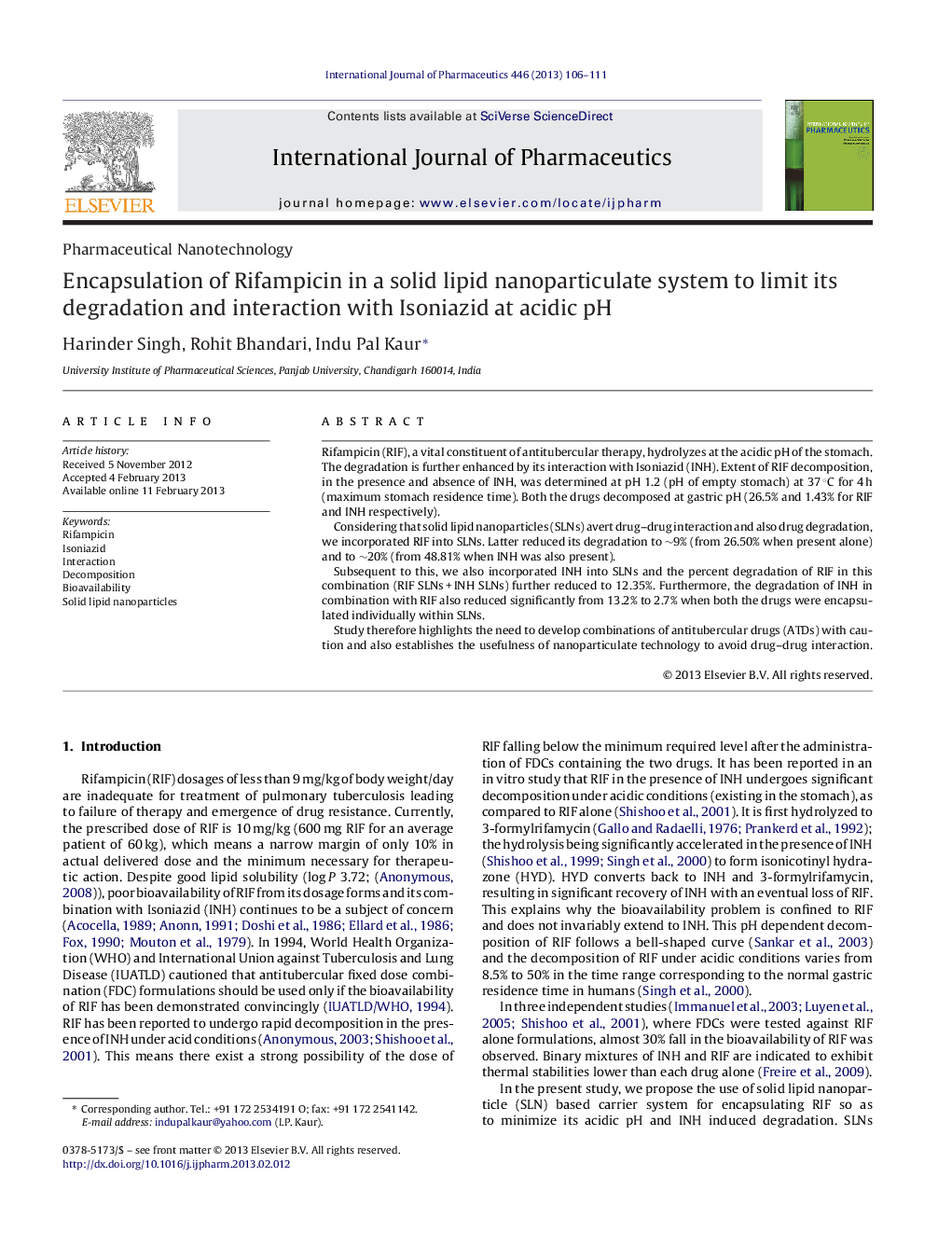| Article ID | Journal | Published Year | Pages | File Type |
|---|---|---|---|---|
| 2502578 | International Journal of Pharmaceutics | 2013 | 6 Pages |
Rifampicin (RIF), a vital constituent of antitubercular therapy, hydrolyzes at the acidic pH of the stomach. The degradation is further enhanced by its interaction with Isoniazid (INH). Extent of RIF decomposition, in the presence and absence of INH, was determined at pH 1.2 (pH of empty stomach) at 37 °C for 4 h (maximum stomach residence time). Both the drugs decomposed at gastric pH (26.5% and 1.43% for RIF and INH respectively).Considering that solid lipid nanoparticles (SLNs) avert drug–drug interaction and also drug degradation, we incorporated RIF into SLNs. Latter reduced its degradation to ∼9% (from 26.50% when present alone) and to ∼20% (from 48.81% when INH was also present).Subsequent to this, we also incorporated INH into SLNs and the percent degradation of RIF in this combination (RIF SLNs + INH SLNs) further reduced to 12.35%. Furthermore, the degradation of INH in combination with RIF also reduced significantly from 13.2% to 2.7% when both the drugs were encapsulated individually within SLNs.Study therefore highlights the need to develop combinations of antitubercular drugs (ATDs) with caution and also establishes the usefulness of nanoparticulate technology to avoid drug–drug interaction.
Graphical abstractFigure optionsDownload full-size imageDownload high-quality image (204 K)Download as PowerPoint slide
